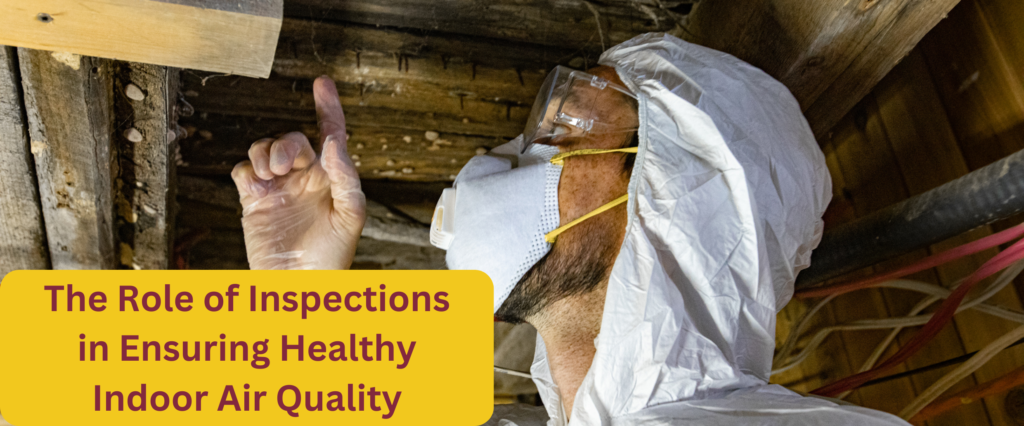
Indoor air quality has become an increasingly important concern for homeowners and businesses alike. With people spending approximately 90% of their time indoors, ensuring clean, healthy air is crucial for our well-being. Professional inspections play a vital role in identifying and addressing potential air quality issues before they become serious problems.
Why Indoor Air Quality Matters
Poor indoor air quality can lead to various health issues, including:
- Respiratory problems
- Allergic reactions
- Headaches
- Fatigue Eye, nose, and throat irritation
- In severe cases, long-term health complications
Key Elements of an Indoor Air Quality Inspection
1. Visual Assessment
Professional inspectors begin with a thorough visual examination of the property, looking for:
- Water damage and stains
- Visible mold growth
- Condensation on windows and surfaces
- Proper ventilation system operation
- Signs of pest infestation
- Structural issues that might affect air quality
2. Moisture Detection
Inspectors use specialized equipment to:
- Measure relative humidity levels
- Detect hidden moisture in walls and floors
- Identify potential water intrusion points
- Evaluate the effectiveness of vapor barriers
- Assess basement and crawl space conditions
3. Ventilation System Evaluation
A comprehensive inspection includes:
- Examining HVAC system components
- Checking air filters and ductwork
- Assessing air flow and distribution
- Evaluating exhaust fan operation
- Reviewing maintenance records
4. Advanced Testing Methods
Modern inspection techniques may include:
- Air sampling for mold spores
- VOC (Volatile Organic Compound) testing
- Carbon dioxide level monitoring
- Particle counting
- Temperature and humidity mapping
Common Issues Discovered During Inspections
1. Mold Growth
- Hidden mold behind walls
- Surface mold in bathrooms and kitchens
- Basement and attic contamination
- HVAC system colonization
2. Moisture Problems
- Leaking pipes and fixtures
- Poor drainage systems
- Inadequate ventilation
- Foundation issues
- Roof leaks
3. Ventilation Deficiencies
- Blocked or damaged ductwork
- Improperly sized systems
- Poor air distribution
- Insufficient fresh air intake
- Malfunctioning exhaust fans
Benefits of Regular Inspections
1. Early Detection
- Identify problems before they become severe
- Prevent extensive damage to building materials
- Reduce repair costs
- Protect occupant health
2. Cost Savings
- Avoid expensive remediation
- Improve energy efficiency
- Extend equipment lifespan
- Prevent property damage
3. Health Protection
- Maintain a healthy living environment
- Reduce allergic reactions
- Prevent respiratory issues
- Ensure occupant comfort
Recommended Inspection Frequency
- Annual comprehensive inspections
- Quarterly HVAC system checks
- Monthly visual assessments by property owners
- Additional inspections after water damage or flooding
Taking Action After an Inspection
1. Review the Inspection Report
- Carefully examine all findings
- Prioritize recommended actions
- Develop an implementation plan
- Set realistic timelines
2. Address Issues Promptly
- Fix water leaks immediately
- Clean or replace air filters
- Schedule professional repairs
- Implement recommended improvements
3. Preventive Measures
- Maintain proper ventilation
- Control humidity levels
- Regular cleaning and maintenance
- Monitor for new issues
Conclusion
Regular indoor air quality inspections are essential for maintaining a healthy living or working environment. They help identify potential problems early, saving money and protecting health in the long run. By understanding the importance of these inspections and acting on their findings, property owners can ensure their indoor spaces remain safe and comfortable for all occupants.
Remember that while DIY assessments are valuable, professional inspections provide the expertise and equipment necessary for a thorough evaluation of your indoor air quality. Consider scheduling regular inspections as part of your property maintenance routine to maintain optimal air quality year-round.
